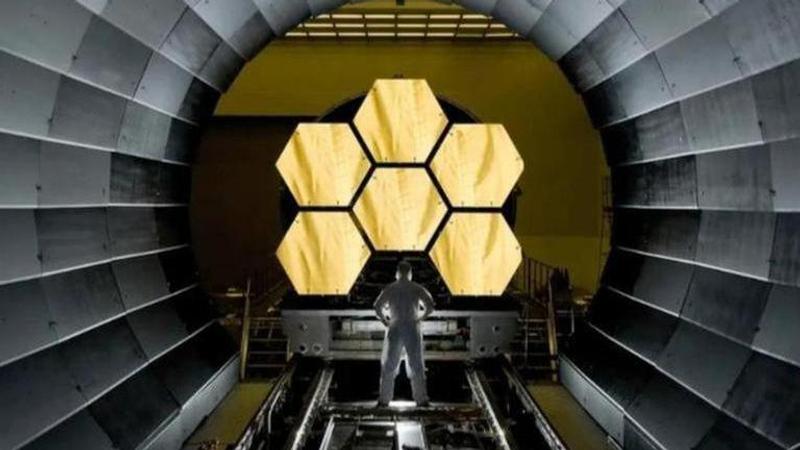Published 20:17 IST, April 8th 2022
James Webb Space Telescope will 'write new chapters on our origins': NASA expert
James Webb Space Telescope will reveal new secrets about stars and planet formations by peering through thick cosmic dust, NASA expert Klaus Pontoppidan said.

With just a few weeks to go before the James Webb Space Telescope comes to life, scientists have already predicted the first year of its operations. The telescope, which has been designed to study the universe in infrared light, will reveal new secrets about the formation of stars and planets by peering through thick cosmic dust.
"It is the study of star and planet formation with Webb that allows us to connect observations of mature exoplanets to their birth environments, and our solar system to its own origins", Klaus Pontoppidan, the Space Telescope Science Institute project scientist for Webb said, as per NASA.
Webb prepares for 'dusting' in space
(The Eagle Nebula’s 'Pillars of Creation' observed in near-infrared (left) vs optical view; Image: NASA)
Webb's high sensitivity to infrared light makes it the perfect observatory to peer through the cosmic dust as infrared light is great at seeing through obscuring dust. What's more, is that infrared also picks up heat signatures of young stars and planets, which would help scientists trace the presence of compounds including water in distant worlds.
"We often hear that infrared light passes through obscuring dust, revealing newborn stars and planets that are still embedded in their parental clouds. In fact, mid-infrared light, as seen by MIRI (Webb's instrument), can pass through 20 times thicker clouds than visible light", Pontoppidan said. Scientists have long known that when young stars are formed, the dust clouds around them linger for about 1,00,000 years, making it impossible to determine what's going on behind the cosmic dust. Thanks to Webb's abilities, astronomers would peer through this dust to uncover the collapsing of gas and dust which form new stars at early stages.
Listing another reason for Webb as the perfect observatory, the NASA expert said that young stars and giant planets themselves are a reason for that. It is evident that young stars get hotter with age whereas planets cool down as they grow older. These changes are perfect for Webb as both types of entities emit more light in the infrared than at visible wavelengths. "That means that Webb is great at detecting new and young stars and planets and can help us understand the physics of their earliest evolution", Pontoppidan said.
The instrument to be used for understanding the origins of stars and planets will be Mid-Infrared Instrument or MIRI, which is currently in the alignment process and would operate at -266°C once activated.
Other equally important instruments- Near-Infrared Camera (NIRCam), Near-Infrared Spectrograph (NIRSpec) and the Fine Guidance Sensor/Near InfraRed Imager and Slitless Spectrograph (FGS/NIRISS) - are completely aligned with Webb's mirror.
(Image: NASA)
Updated 20:17 IST, April 8th 2022




